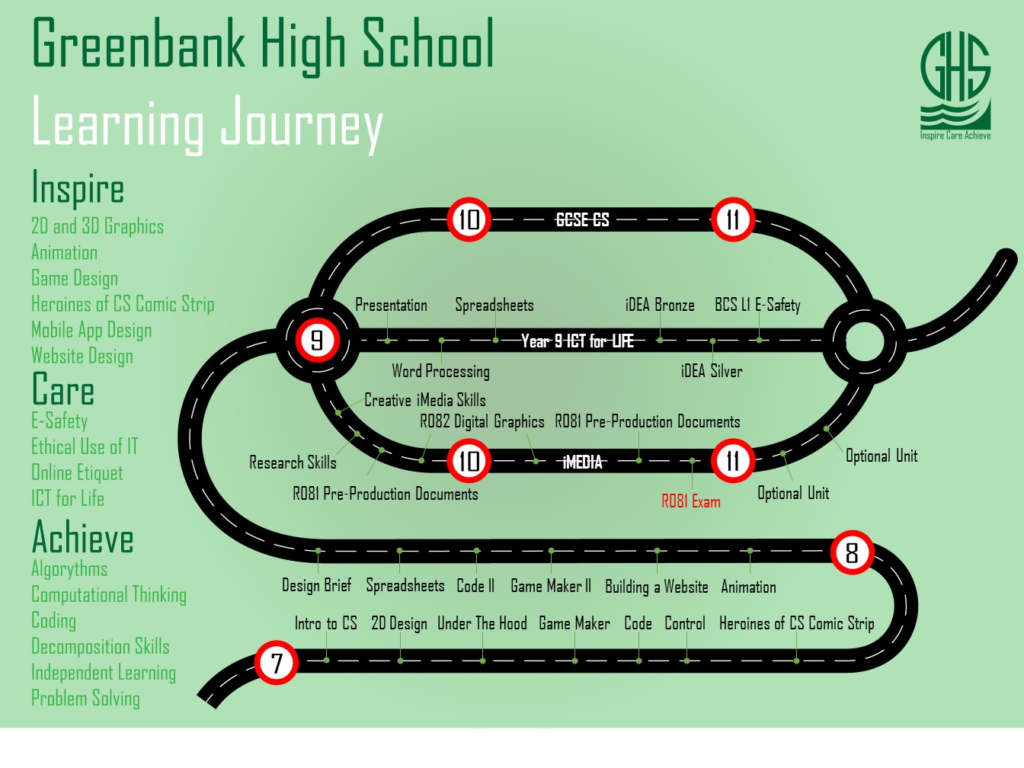CURRICULUM AIMS AND VALUES
Our intent is to promote computational thinking and digital creativity. We want our pupils to develop the foundations to enable them to be discerning, life-long learners in a fast moving landscape. We want the pupils to assess the effects of this sometimes disruptive influence and make changes based on a solid knowledge of the computing sector.
Computer Science Vision
The vision for the department is to provide a balanced and informed curriculum across all key stages in the school. The aim is for the pupils to be active and engaged users and creators in the emerging digital economy. The curriculum is designed to allow pupils to have access to Computer Science, Information Technology and Digital Literacy skills and for pupils to make informed choices on how they pursue the subject as they continue their learning journey through the school. The vision is for the pupils to learn transferable skills that can be applied to all subjects and aspects of learning to speed up the research and analysis required to pinpoint key information to further progress in their education.
The curriculum is designed around the three principles:
- Computer Science
- Information Technology
- Digital Literacy
Computer science is the scientific and practical study of computation: what can be computed, how to compute it, and how computation may be applied to the solution of problems. Information technology is concerned with: how computers and telecommunications equipment work, and how they may be applied to the storage, retrieval, transmission and manipulation of data. Digital literacy is: the ability to effectively, responsibly, safely and critically navigate, evaluate and create digital artefacts using a range of digital technologies. The creation of digital artefacts will be integral to much of the learning of computing. Digital artefacts can take many forms, including digital images, computer programs, websites, animations, spreadsheets, presentations and documents.
Sequencing of concepts is progressive through the individual topics and entire scheme of work. Building on digital literacy skills from Key Stage 2 such as using word processing and/or presentation software. Also developing from visual (block) programming into higher level programming languages.
The curriculum is broad, balanced and integrated, with the breadth and depth that will support pupils whichever option they choose at Key Stage 4. Furthermore Computer Science enables pupils to use, express themselves and develop their ideas through information and communication technology at a level suitable for future studies and the workplace, as active participants in a digital world. We provide pupils with an understanding of the foundations of computing, to help them better apply information technology and better understand the implications of the technologies they use every day. Computers and information technology is used to evidence and enhance learning. We will use computational thinking challenges in the curriculum to develop confident, creative and resilient problem solvers. Teaching and learning focuses on solving (scalable) real-life problems, and there are strong links to other curriculum subjects through regular skill audits. We use programming tools to bridge the gap between good computational thinking (problem solving) and computers, selecting the appropriate programming language for the challenge and teaching key programming concepts rather than teaching a select programming language exclusively.



